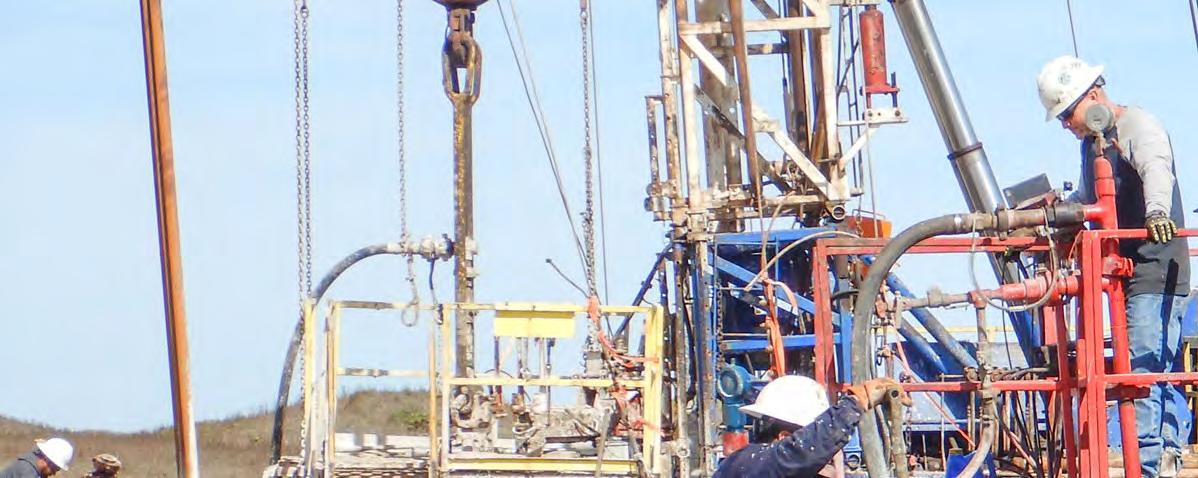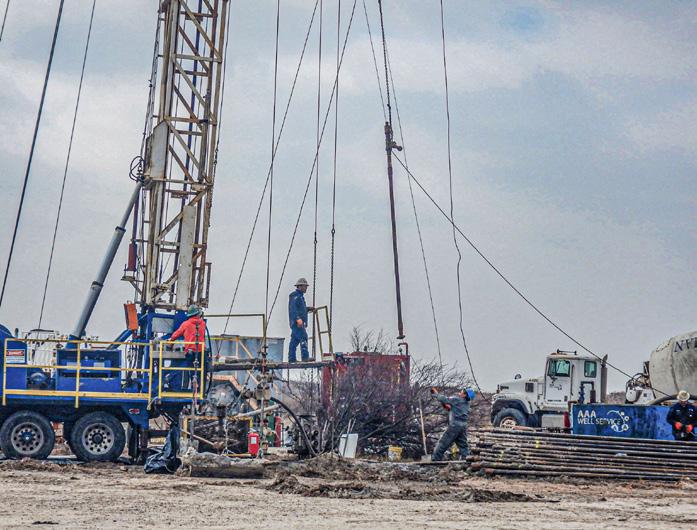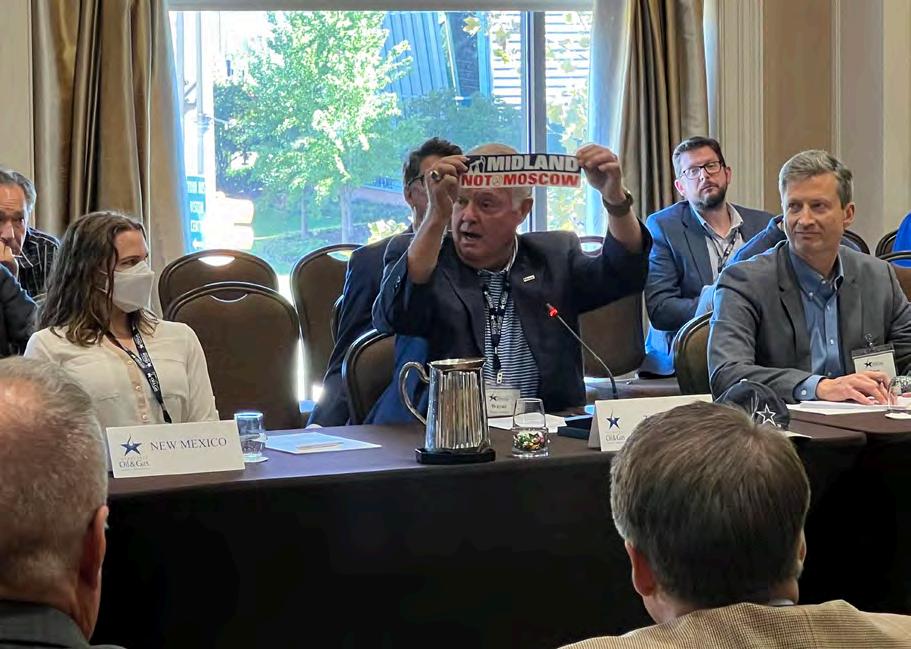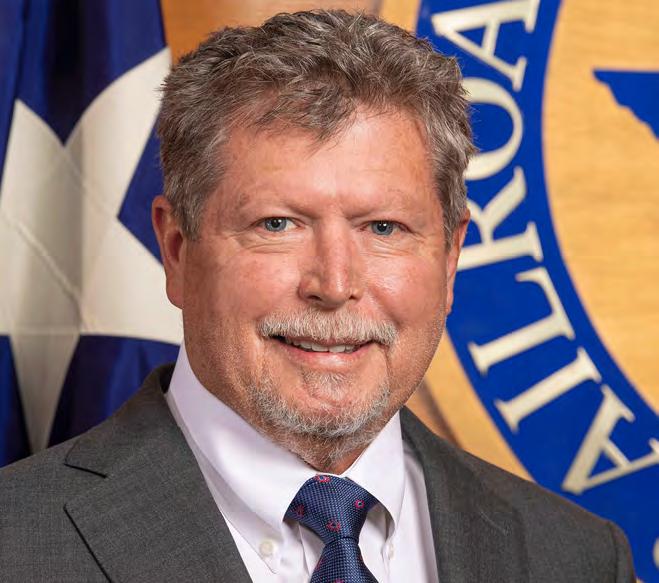EnergyNews







The Commission has already started extending its success in FY 22 into the new fiscal year.
RRC’s commissioners on Oct. 11 approved the State Managed Plugging and Site Remediation Workplan for Fiscal Year 2023, which includes an ambitious plan to plug 1,800 orphaned wells and clean up 200 abandoned oil and gas sites. The budgeted amount includes $45.25 million for the plugging effort and $10.7 million for site remediation. The plugging total includes a $25 million initial grant from the Department of the Interior to plug an additional 800 wells on top of 1,000 wells already in the agency’s goals set by the Texas Legislature.
“During Fiscal Year 2022, the State Managed Plugging and State Managed Cleanup programs exceeded their performance measures by plugging 1,068 wells and closed 245 cleanup activities,” Keith May, the Project Manager for plugging program, told the commissioners. “This marks the sixth year in a row that these two programs have collectively exceeded their performance measure goals. We hope to make that seven years in a row.”
Besides federal funds being distributed to states from the Infrastructure Investment and Jobs Act, Chairman Wayne Christian noted that RRC’s plugging and cleanup efforts are financed via industry revenue, not taxpayer dollars.
“The Railroad Commission of Texas and the fine people that work here are absolutely the example of how do things right and have set world standards on how to plug abandoned wells,” he said. “ And I guess as long as there is one out there, it’s our challenge to do it.”
The RRC’s critical mission of protecting public safety and the environment and facilitating the growth of oil and gas resources saw another successful year thanks to the hard work of the agency’s staff.

The RRC exceeded a number of critical performance goals set by the Texas Legislature in Fiscal Year 2022, which ended on Aug. 31. These range from plugging abandoned oil and gas wells to conducting inspections and facilitating an increase in drilling permits during a year in which international conflict amplified the importance of the state’s energy production.
“RRC staff’s strong performance helped keep Texans’ safe, while at the same time ensuring the vital oil and gas industry continued to support national and international energy demand and boosted the Texas economy,” said Wei Wang, RRC Executive Director. “We continue to leverage cutting edge technology such as artificial intelligence and drones to improve efficiency for staff and operators, and we will use our experience to extend our success through the next year.”
Number

Thanks to the Railroad Commission’s long-established orphan well-plugging program, the agency was able to quickly ramp up its efforts to take advantage of federal funding from the Infrastructure Investment and Jobs Act.
In fact, the agency was the first in the country to begin such work in mid-October with the plugging of an abandoned gas well in Refugio County in South Texas, which was completed on the 18th. The RRC anticipates the initial grant will be used to plug approximately 800 abandoned wells in FY 2023. These would be in addition to 1,000 wells the agency anticipates will be plugged this fiscal year by the successful State Managed Plugging Program (SMP), using industry fee and fine revenue from the Oil and Gas Regulatory and Cleanup Fund.

“The RRC’s success and expertise with SMP was instrumental in quickly standing up the plugging project using federal funds,” said Clay Woodul, RRC Assistant Director of the Oil and Gas Division for Field Operations. “Our established workplans and contracting will continue to help ensure neighborhoods and the environment across Texas are kept safe through our well plugging work.”

The RRC has a web page on the federal grant funds for abandoned oil and gas well plugging. That page also includes information on the wells being plugged.



As part of its extensive computer modernization efforts, the RRC has been working to implement a new application to handle business processes for the agency’s Oil and Gas Division.
The LoneSTAR system, which launched internally earlier this year, is based on the Risk-Based Data Management System (RBDMS) platform developed by the Groundwater Protection Council.


Once it opens externally, the first phase will allow for operators to submit forms online, including Form P-5, Organization Report, which operators need to operate under RRC regulations; Form W-3C, Certification of Surface Equipment Removal for an Inactive Well; and Form W-3X, Application for an Extension of Deadline for Plugging an Inactive Well.
To help provide insight, RRC’s Information Technology Services answered questions about LoneSTAR.
Why is RRC basing LoneSTAR on the Risk-Based Data Management System?
ITS: This platform was designed specifically for oil and gas regulatory processes. It has been implemented in close to 30 states within the United States, and during an initial assessment conducted by the RRC, it proved to be a good fit for what we needed.
What will be the ultimate scope of LoneSTAR?
ITS: The current plan is for all Oil and Gas Division business applications in the mainframe to move into RBDMS LoneSTAR by the end of 2028.

How will operators interact with LoneStar?
ITS: LoneSTAR is an online system that will enable operators to conduct their oil and gas regulatory transactions online and in a secure manner.
What are the advantages of LoneSTAR over the mainframe?
ITS: It is expected that LoneSTAR will move the RRC toward a more flexible and scalable platform and will provide the industry additional visibility on their application status, provide self-service capabilities, as well as improved and more timely reporting.
Mainframe is good for the number of transactions and calculations needed but hinders our ability to interact in a modern way with industry and the public, and more important, resources/support for the mainframe will cease to exist in the near term. What challenges have the RRC had moving from the mainframe to the new system?
ITS: Understanding the processes within the mainframe has been a challenge. There are 12 million lines of code that have been written over the last 50 years, and it is crucial to understand that when moving these processes to new systems. Also, the amount of time needed from the program area and ITS staff to support the entire effort has been monumental.
The RRC is accepting public comments on rule amendments related to its Alternative Fuels Program. These include 16 Texas Administrative Code Chapter 13, relating to regulations for compressed natural gas regulations, and 16 TAC Chapter 14, relating to regulations for liquefied natural gas.

The proposed amendments would implement changes as specified in Senate Bill 1582, which was approved by the 87th Texas Legislature in 2021. The changes also update, clarify and ensure consistency among alternative fuel regulations.
Public comments on the changes will be accepted until 5 p.m. on Nov. 28. To view the proposed rules amendments and submit comments, visit RRC’s proposed rules web page.
 VIEW THE PROPOSED RULES WEB PAGE
VIEW THE PROPOSED RULES WEB PAGE
Texas is the top producer of crude oil and natural gas in the United States, accounting for 43% of crude oil production and 25% of natural gas, according to the Energy Information Administration.
The oil and gas industry represents nearly one quarter of the Texas economy (gross state product), according to the Texas Oil and Gas Association.
In 2021, the oil and gas industry in Texas accounted for 1.9 million jobs (both direct and indirect), according to the Texas Independent Producers and Royalty Owners Association.
Oil and gas workers earn an average salary of about $132,000, which is 107% higher than average private sector jobs, according to TIPRO.
Since 2007, the Texas oil and gas industry has paid nearly $179 billion – or an average of almost $12 billion per year – to royalty owners, the state of Texas and local governments, according to TXOGA.

Following the publishing of a Dallas Morning News editorial, “Poisonous abandoned oil wells are all over North Texas: State must make sure it receives $344 million in federal money to plug troublesome orphan wells,” on Oct. 5, Chairman Wayne Christian sent a response to the paper to clear up errors:
Picture, if you will, your business only being discussed in a bad light; bankers are crooks, mechanics are shady, and doctors are greedy. That’s how the oil and gas industry is often written about. Never mind the fact it’s responsible for almost 40% of U.S. power generation.
The mainstream media often paints that ugly picture using multiple inaccuracies about “orphaned wells” in Texas. It misinforms readers about the valuable work the Railroad Commission (RRC) does every day to protect public safety and the environment.
The media claims that there are “Tens of thousands of dangerous and abandoned oil wells” in Texas, which sounds horrible. However, the state’s latest report had about 7,900 abandoned oil and gas wells, which is far off from the hyperbolic “tens of thousands.” And when you compare it to the more than 251,000 active wells in Texas, orphaned wells are about 3% of the total well population.
When a well no longer produces oil or gas, the operator of that well is required by law to plug it, and an overwhelming majority of oil and gas wells are plugged by their operators in accordance with the law. In fact, more than 7,800 were plugged by oil and gas companies in Fiscal Year 2022.
A well is abandoned, or orphaned, when nobody has ownership of it or is taking care of it, and that is when the RRC steps in, as it has done for decades, and plugs the wells to ensure the safety of Texans and our environment. In fact, Texas plugs more wells than any other oil/gas producing state (roughly 42% of total U.S. wells) and has exceeded the Texas Legislature’s plugging goals for six years straight.
Moreover, there’s a misconception that taxpayer funds go toward plugging wells. That claim is misleading because the RRC’s State Managed Plugging Program is funded by fees paid by the oil and gas industry—not the taxpayer.



The media and special interest groups also push for stringent policy changes which would only increase regulations on the industry leading to less production. With U.S. energy costs up more than 20% and gasoline prices rising again to almost $4 a gallon, Americans need more domestic oil and gas production – not more regulation – to lower prices for consumers.
During my service as Vice Chair for the Interstate Oil and Gas Compact Commission (IOGCC), I worked with Texas Congressional leaders to ensure federal infrastructure funds would help plug wells in the state to supplement the ongoing work of the state. The Commission is the first state in the nation to begin using these funds, which will lead to remedying an estimated 800 additional wells.
Texans can rest assured that the agency is doing everything possible to ensure the safety of the public and environment.
Orphaned WellsIn October, Chairman Wayne Christian represented the State of Texas and the Railroad Commission at the biannual meeting of the Interstate Oil and Gas Compact Commission (IOGCC) in Baltimore. He heralded the responsible effort of Commission staff and championed the hard work of the industry, particularly reminding his colleagues that America should choose “Midland over Moscow” for our energy production. He was supported by commission staff (Danny Sorrells, Clay Woodul, Colleen Forrest, Joe Stasulli and Natalie Dubiel) and was particularly proud of the Winter Storm Uri presentation that Natalie Dubiel gave at the public relations committee meeting.
The Chairman also published a press release critical of the Biden Administration and their continued use of the U.S. Strategic Petroleum Reserve to mitigate gas prices, instead of increasing domestic production to drive down costs for American consumers.
“Winter is coming: the U.S. and our European allies need more U.S. oil and gas today—not after the midterm election,” said Chairman Christian. “OPEC+ and Putin aren’t the answer to our energy security. Harnessing the Permian Basin is. We achieved energy independence under former President Trump in 2019 by increasing U.S. production, and we can do it again.”




In October, Commissioner Christi Craddick traveled to Midland to tour natural gas production facilities operated by Ovintiv. At these sites, Commissioner Craddick was able to observe some of the weatherization efforts that companies like Ovintiv have implemented in response to the Railroad Commission’s new Statewide Rule 3.66. Efforts such as methanol injection, temporary windbreaks and pipe coverings were all utilized and operators have the flexibility to make selections for their facilities on a case-by-case basis as one size does not fit all.
Commissioner Craddick also had the opportunity to speak to the Young Professionals in Energy while in Midland. She provided an update on the state of the industry from a regulatory perspective and was pleased to see such a large group of young, engaged, and active oil and gas industry members participating.
Finally, Commissioner Craddick visited Abilene where she was able to visit the site for ACU’s planned nuclear reactor, Next Lab, as well as tour the Texas State Technical College campus. Both of these sites are making huge strides to bridge the gaps in workforce development and energy development in this state, and Commissioner Craddick was honored to visit with officials at both facilities.


In October, Commissioner Wright travelled throughout the Permian and Eagle Ford to speak with producers, landowners, and various stakeholders about the state of the energy industry in Texas. During his travels, Commissioner Wright discussed recent Railroad Commission actions on weatherization, the use of federal grant funding to plug orphan wells, potential issues of interest to stakeholders in the upcoming legislative session and his desire to revise and update agency rules regarding waste disposal and water reuse to better align with current industry practices.